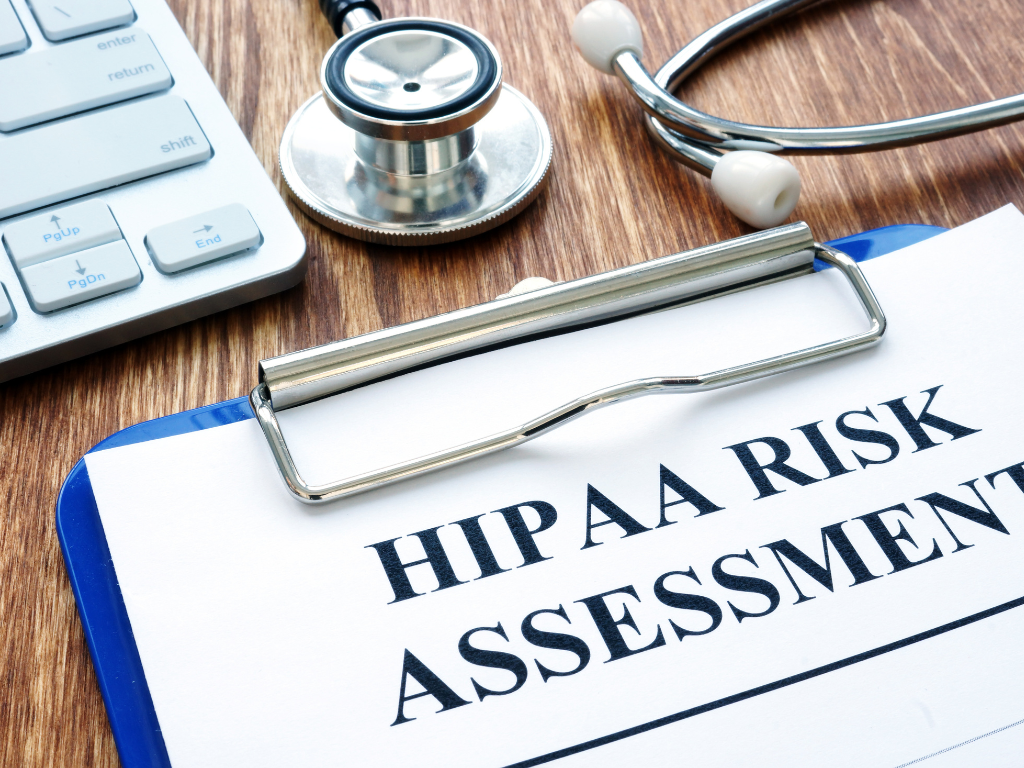Compliance with the Health Insurance Portability and Accountability Act (HIPAA) is critical to healthcare. This article delves into the concept of a HIPAA Risk Assessment – a vital tool designed to safeguard sensitive information and ensure regulatory adherence.
We’ll explore what a HIPAA Risk Assessment entails and the tools that can assist with implementation. As we conclude, we’ll be able to underscore the purpose of conducting such assessments in today’s digital healthcare environment.
What is a HIPAA Risk Assessment?
A HIPAA Risk Assessment is an integral process that evaluates threats to the privacy and security of Protected Health Information (PHI). It gauges the likelihood of these threats materializing and determines the potential impact of each threat. The goal of this assessment is to determine whether existing policies, procedures, and security mechanisms are sufficient to reduce risk to a reasonable and appropriate level.
The necessity for covered entities and business associates to conduct a HIPAA Risk Assessment is mentioned twice in the Administrative Simplification provisions of the Health Insurance Portability and Accountability Act.
Types of HIPAA Risk Assessments
HIPAA risk assessments provide systematic ways to identify vulnerabilities, estimate the likelihood of a breach, and calculate the potential impact on the organization. This section will focus on three key types of HIPAA risk assessments – security, breach, and privacy.
1. HIPAA Security Risk Assessment
A HIPAA security risk assessment, as defined in the General Rules (CFR 45 § 164.306), aims to:
- Safeguard the confidentiality, integrity, and availability of all electronic PHI that the covered entity or business associate creates, receives, maintains, or transmits.
- Protect against reasonably anticipated threats or hazards to the information’s security or integrity.
- Guard against reasonably anticipated unpermitted uses or disclosures under subpart E of this part (the Privacy Rule).
- Ensure workforce compliance with this subpart (the Security Rule) through training and a sanctions policy.
Regarding the Administrative, Physical, and Technical Safeguards of the Security Rule, the General Rules permit a “flexibility of approach” in implementing the standards.
However, despite this flexibility, all standards should be implemented unless an implementation specification isn’t “reasonable and appropriate” and an equivalent alternative measure is implemented instead.
2. HIPAA Breach Risk Assessment
The second “required” HIPAA risk assessment, the Breach Notification Rule, is optional as it presumes any impermissible acquisition, access, use, or disclosure of PHI to be a breach unless a low probability of compromise can be demonstrated via a risk assessment considering factors such as:
- The nature and extent of breached PHI, including types of identifiers and the reidentification likelihood,
- The unauthorized person who acquired, accessed, or used the breached PHI,
- Whether PHI was actually acquired or viewed,
- The extent to which the risk to PHI has been mitigated.
Although described as optional, conducting a HIPAA breach risk assessment can prevent unnecessary notifications and maintain trust. Opting out could disrupt business if HHS´ Office for Civil Rights decides to conduct a compliance review due to an above-average number of data breaches.
Furthermore, frequent breach notifications can erode trust from patients and plan members, especially if they are advised to take protective measures against fraud, theft, and loss unnecessarily because “breached” PHI has not been acquired or viewed.
HIPAA Privacy Risk Assessment
Despite the requirement to conduct risk assessments being part of the HIPAA Security Rule, many entities and business associates fail to recognize the need for a HIPAA privacy risk assessment. This assessment is equally significant as a security risk assessment but can be a more substantial task depending on the organization’s size and nature of business. Here are the steps to conducting a HIPAA privacy risk assessment.
Appointment of a privacy officer
An organization should assign a Privacy Officer to carry out a HIPAA privacy risk assessment. The officer’s initial task is to identify organizational workflows and gain a comprehensive understanding of how the HIPAA Privacy Rule impacts the organization’s operations.
Mapping the flow of PHI
Next, the Privacy Officer needs to map the flow of PHI internally and externally. This step is critical in conducting a gap analysis to identify potential areas where breaches may occur.
Development of a HIPAA privacy compliance program
The final stage of a HIPAA privacy risk assessment involves developing and implementing a HIPAA privacy compliance program. This program should encompass policies that address the risks to PHI identified in the assessment. It should undergo review whenever new work practices are introduced or new technology is deployed.
Tools for Conducting a HIPAA Risk Assessment
Conducting a comprehensive HIPAA risk assessment across all facets of an organization can be a complex task. This is especially true for smaller medical practices with limited resources and minimal experience in complying with HIPAA regulations. To simplify this process, several tools have been developed:
Security Risk Assessment (SRA) Tool
Released by the Office for Civil Rights (OCR) in 2014, the SRA tool is designed to aid small to medium-sized medical practices in compiling a HIPAA risk assessment. It helps organizations identify areas where weaknesses and vulnerabilities may lie. However, it’s important to note that the tool does not cover all potential weak points. The User Guide accompanying the software clearly states, “The SRA tool is not a guarantee of HIPAA compliance.“
Third-party Tools
Numerous third-party tools available online might help organizations identify some vulnerabilities. However, they may not guarantee a fully compliant HIPAA risk assessment. Many vendors include disclaimers in their terms and conditions, echoing the caveat at the beginning of the SRA tool User Guide.
While tools assisting with a HIPAA risk assessment can help identify potential issues, they do not necessarily provide comprehensive solutions.
Wrapping Up: The Purpose of HIPAA Risk Assessment
In essence, the purpose of HIPAA Risk Assessment is to preserve the sanctity of PHI. It’s not merely a regulatory requirement but a strategic move that helps organizations identify potential risks, implement appropriate safeguards, and maintain compliance with HIPAA rules.
From security to privacy aspects, a thorough risk assessment is the cornerstone of effective health information management, ensuring that the integrity of PHI is upheld while fostering trust among patients and stakeholders.




